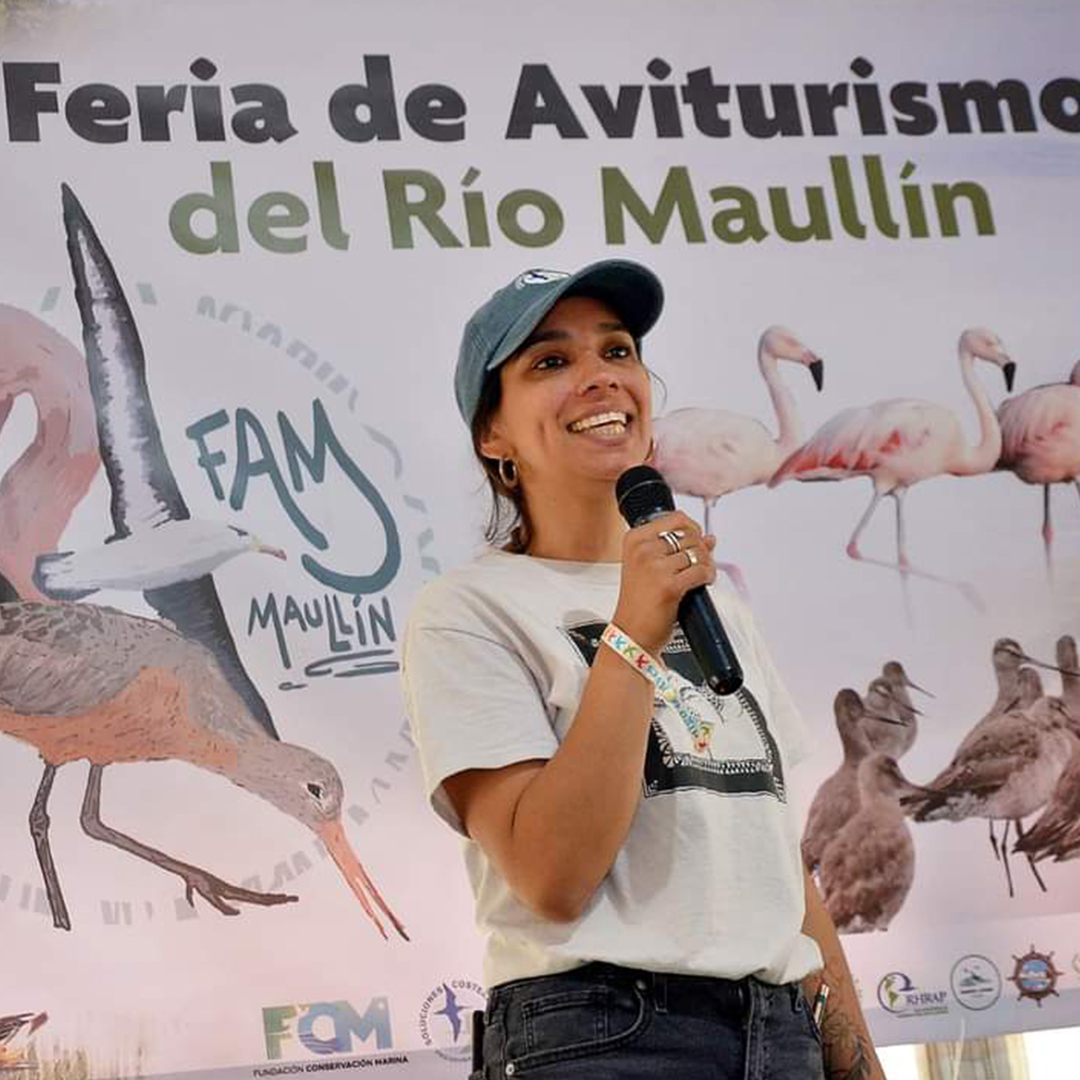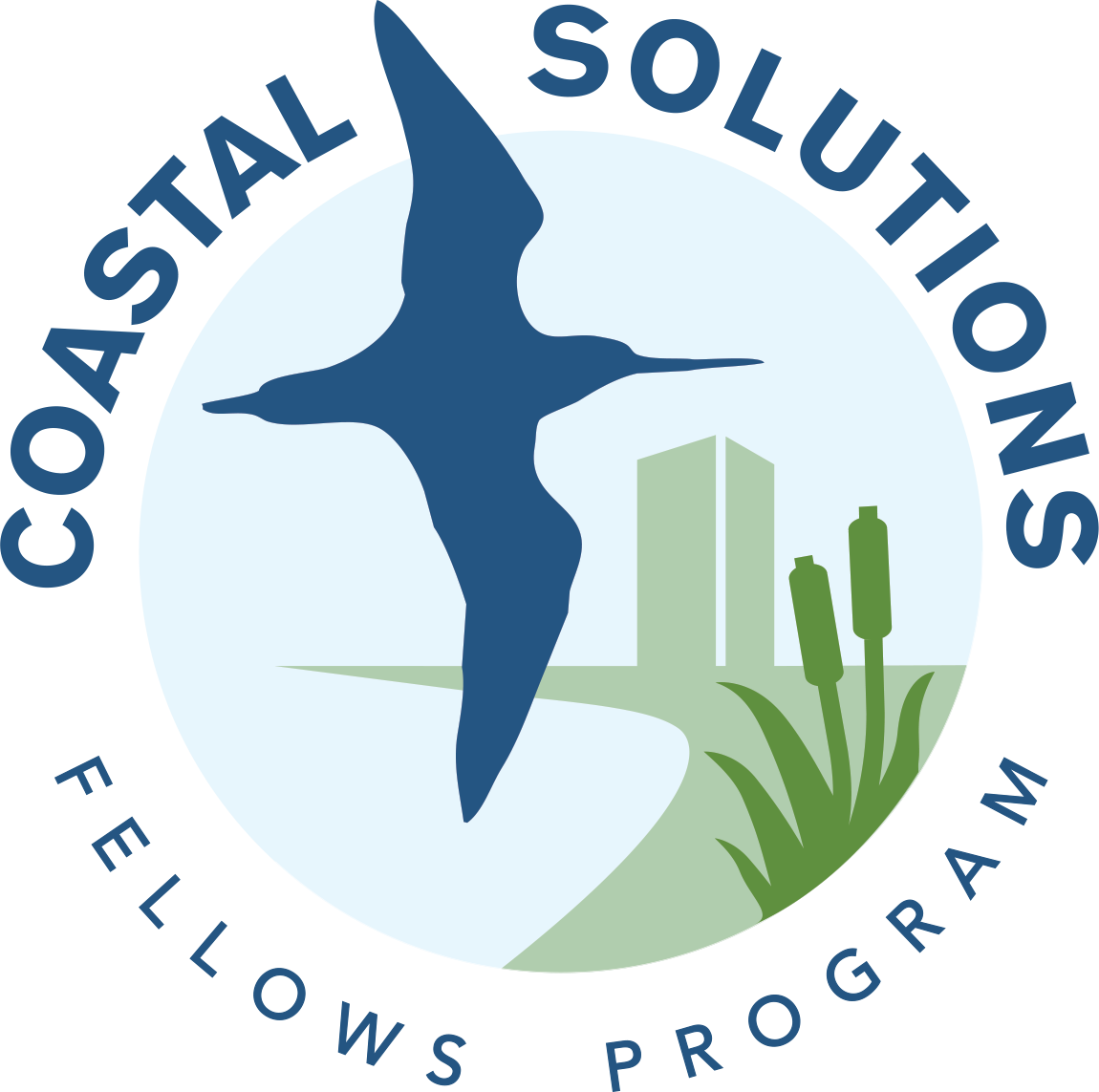The First Maullín River Birding Fair: A milestone for conservation and sustainable tourism in Chile
By Daniela Ruz (CSF 2023)
The First Maullín River Birding Fair (FAM) was born as a collaborative initiative that is part of the project “Sustainable Community Tourism: A strategy for shorebird conservation at three WHSRN sites in southern Chile,” which seeks to reduce harmful recreational practices by promoting sustainable tourism, bird watching, and strengthening the potential of local tourism operators.
Inspired by the XII South American Bird Fair in Mindo, Ecuador held in 2023, the idea for the FAM came about thanks to two local tourism entrepreneurs from Maullín. Miriam Solar and Moisés Barrientos attended this fair on behalf of the Maullín and Chiloé bird tourism group, with the support of the Coastal Solutions Program and the Marine Conservation Foundation (FCM). Motivated by this experience, the dream of creating a fair that promotes Maullín as a national and international destination for birdwatching and sustainable tourism began.




The event was held on November 24, 2024 in the commune of Maullín, Los Lagos Region, Chile, with the support of a group of tour operators and other birding ventures in the Maullín River Wetlands Nature Sanctuary. The main objectives of the FAM were: to position Maullín as a bird watching destination, to promote local economic development, and to promote the conservation of birds and their natural habitats through sustainable tourism and environmental education.
Wetlands of the Maullín River: Refuges of biodiversity and sustainable tourism.
Maullín is located in southern Chile, in the Los Lagos region, specifically at the mouth of the river of the same name.
This territory is home to a variety of unique ecosystems, from its source in Lake Llanquihue to its mouth at the Pacific Ocean, it supports riparian forests, totora grasslands, hualves (flooded forests), and large expanses of intertidal flats in its estuarine part. In this area there are five wetlands that are part of the Western Hemisphere Shorebird Reserve Network (WHSRN), as they are home to the community of boreal migratory shorebirds, like the Hudsonian Godwit (Limosa haemastica), that use these wetlands as a resting and feeding area during their migratory route, as well as other southern migratory waterbirds, like the charismatic Chilean Flamingo (Phoenicopterus chilensis). These characteristics have helped make Maullín a place of high tourist interest, especially for photographers, researchers and birdwatchers.


A diverse and inclusive fair
The FAM took place at the Maullín fishermen’s dock, involving not only those interested in birdwatching but also the local community, including the sale of ancestral and traditional southern Chilean foods, prepared by an association of indigenous women.
Environmental education was a central theme throughout the day. Activities included scientific poster presentations, lectures and educational workshops open and free to the public.
Collaborators from various fronts were present, including Fernando Medrano and Daniela Díaz from the Chilean Bird and Wildlife Observers Network (ROC) who shared talks on terns and shorebirds. From the Bío Bío region, the group “Rayados por las fotos”, led by its creator Cristián Larrere, launched its latest book of photographs of birds of Chile, and Ignacio Villagrán from “Los ángeles Nativo” shared about mental health and birdwatching. Local entrepreneurs “Aviturismo Maullín Expediciones” dazzled us with the diversity of pelagic birds that can be observed in Maullín’s ocean waters, while “Glamping refugio verde” taught about composting and organic recycling, and Daniela Ruz, Coastal Solutions Fellow of 2023,spoke about municipal regulations for the implementation of Sustainable Tourism in Wetlands, following the recent approval of the municipal ordinance. There were also watercolor bird illustration and photography workshops.
International guests of great trajectory shared their research and passion for bird conservation. Lorenzo Sympson from the Sociedad Naturalista Andinopatagónica of Argentina, told us about the Transpatagonian bird censuses carried out during two decades, and Patricia González, outstanding ornithologist, winner of the Allan Baker 2024 award, part of the Inalafquen Foundation, Argentina and the International Conservation Fund of Canada, amazed and inspired us with her story and presentation on “Migratory birds… messengers of science to emotion”. We ended this section with a great guest, a pioneer of bird watching and research in Maullín, Luis Espinosa from FCM who spoke to us about Bird Conservation in the south of Chile, which left us all with a hopeful outlook.
At FAM we thought of having activities for all ages. Thanks to the Lancüyen Language School, there was a children’s area throughout the entire event, where little ones enjoyed drawing and painting activities, children’s yoga with Tía Piure and storytelling with Tía Hojita, an environmental educator from the Los Lagos region. There were also stands of products related to birds, handicrafts, tour operators from Maullín and Chiloé, and thanks to local artists, the event also featured live music. Guides from the region offered birdwatching, sailing, kayaking and hiking excursions through the different ecosystems of the Maullín River and surrounding areas, for all visitors throughout the FAM.
Moving into the future: Conservation projects
Daniela contributed during 2023-2024 to the case study included in the “Toolkit for Managing Human Disturbance to Shorebirds in Latin America,” developed by theMigratory Shorebird Project (MSP) and the Pacific Shorebird Conservation Initiative (PSCI).
Tool number 2, called “Case Studies of Human Disturbance Mitigation Initiatives,” includes Case No. 4: “Sustainable Avitourism,” which documents conservation actions and community engagement work with local tourism operators, led by the FCM in southern Chile. Together with the Coastal Solutions Fellows Program, over the past two years we have been able to consolidate effective strategies to mitigate impacts to shorebirds through sustainable tourism and local public policies.
As a result of these actions, the wetlands of the Maullín River have been incorporated into the Migratory Shorebird Project (MSP) as of January 2025. This milestone makes these wetlands, along with the Bahía Curaco de Vélez and Bahía Villa Quinchao Nature Sanctuaries in Chiloé, the southernmost sites integrated into this hemispheric conservation initiative.
You can find more details about this and other events organized by the Marine Conservation Foundation, along with registrations, scientific poster applications, and birding activities on the FAM website: www.famaullin.cl .

The Coastal Solutions Fellows Program builds and supports an international community to design and implement solutions that address coastal challenges across the Pacific Americas Flyway. Our main goal is to conserve coastal habitats and shorebird populations by building the knowledge, resources, and skills of Latin American professionals, and by fostering collaborations among multiple disciplines and sectors.
